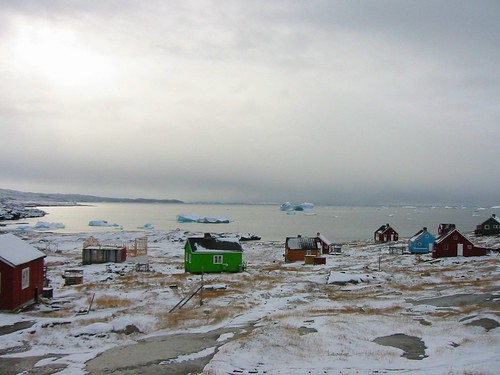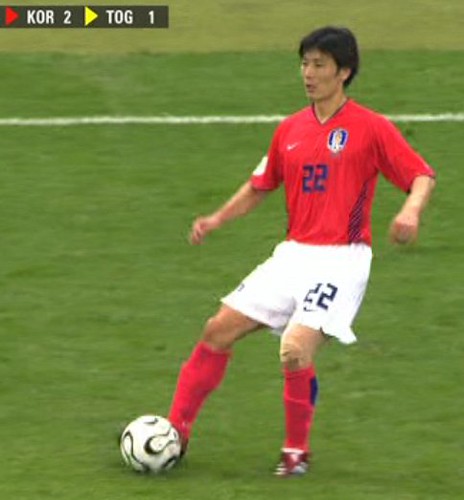An African in Greenland is an autobiographical book; as a teenager in Togo, Tété-Michel Kpomassie read a book about Greenland and decided to go there. It took him eight years, working a variety of jobs, to make his way up through West Africa and Europe before eventually arranging a trip to Greenland, where he stayed for about two years (in, if I’ve got my sums right, 1965).
The book’s title implies that there is some kind of different perspective that Kpomassie is going to bring because he’s African, and I have to admit that it was part of the appeal for me when I bought the book. It’s such an immediately striking juxtaposition, this young man from Togo living among the Inuit and eating seal blubber: just the title is like a pitch for a cheesy Hollywood comedy.

In fact, it’s not obvious that his Africanness makes that much difference to the book, after the first couple of chapters that take place in Africa, and in retrospect it’s hard to say what I was expecting, really. There are a couple of occasions where he compares local beliefs (about the travels of the human soul in dreams, for example) with those he grew up with; and his Africanness does make him an instant celebrity in Greenland: the first black person most of them had seen, and several inches taller than most of the locals.
It is, though, an interesting and enjoyable book about Greenland: ice-fishing and dog-sledding and eating of revolting-sounding bits of raw viscera and lumps of animal fat. Whale lung! Boiled sea gull! Yummy. And as with Halldór Laxness in Iceland, endless cups of coffee.
Although actually, I think it’s to his credit that he clearly made a point of eating everything that was put in front of him, and doesn’t spend a lot of time in the book dwelling on the off-putting nature of the food. Perhaps it’s nicer than it sounds; perhaps he just wanted to downplay the potential freak-show aspect of this kind of travel book. He has a fairly clear-eyed view of the harshness of life for many of the people he meets and the social problems he encounters, but he doesn’t dwell on it excessively. Perhaps even more surprising for someone who had travelled for eight years to get there to fulfil a childhood dream, he doesn’t romanticise the country either: not too much of the noble savage stuff.
Here’s a longish passage about life during the time of the midnight sun, with 24 hour daylight:
The oddest thing was that we couldn’t get to sleep any more. To fill in the time I stayed at the school, where I took notes, sometimes until three in the morning. Kield Pedersen, the Danish headmaster, kindly gave me access to the Medelelser of his establishment — many bulky volumes which contained the findings of every piece of research done in Greenland since the days of Hans Egede.
Outside, small orange or red tents sprang up, erected by children whom the endless daylight kept from sleeping. At three in the morning you could still see them playing outside. Sometimes they went on like this for two whole days without going to bed. Eventually they dropped with fatigue, and then might sleep for two days at a stretch. It was the teachers, not the parents, who complained, because most of the time their classes were half empty.
Sleep eluded the adults, too. Everyone was restless. They had hardly set foot indoors before they were longing to go out again, to tramp on and on, to run from hill to hill. They rambled around incessantly, in search of who knows what. All through the spring they’d go wandering like this, building cooking fires in the mountains with three stones for an oven, gathering parnet berries, resting no matter where when tiredness overtook them. both with humans and animals, spring here was the season of tireless frenzies of love. Groups of boys and girls ran laughing and shouting until early morning, and there was the noise of rutting huskies fighting, the deep growls of the males mingling with the bitches’ piercing yelps. The birds sang and the eiders quacked in the creeks.
The landscape seemed excluded from this general harmony, and it changed from day to day. All the filth of Christianshåb was suddenly exposed by the sun’s return and the thaw. Snow melted n the slopes, the street became a river of mud, and innumerable streams riddled the ash-grey earth and brought to light piles of of old bottles and cans, dog shit, household waste, and rotten potatoes. All the garbage which cold and snow had preserved — now swollen with melted water, rotting fast and buzzing with clouds of flies, real flies, come out to haunt us like a bad conscience. Outside the doors and under the foundations, the houses were repulsively filthy. the borrowed coat of spotless white had covered so much offal! A sickening stench hung everywhere. the dogs, some of them now moulting, slunk squalidly about the village. You really wondered whether you were still living in the same land that had once been so clean and white.
An African in Greenland is my book from Togo for the Read The World challenge. Oh, I nearly forgot: it was translated from the French by James Kirkup.
» The photo, Oqaatsut/Rodebay, Greenland, is © kaet44 and used under a CC attribution licence. Rodebay is one of the villages where Kpomassie spent a winter in Greenland.
